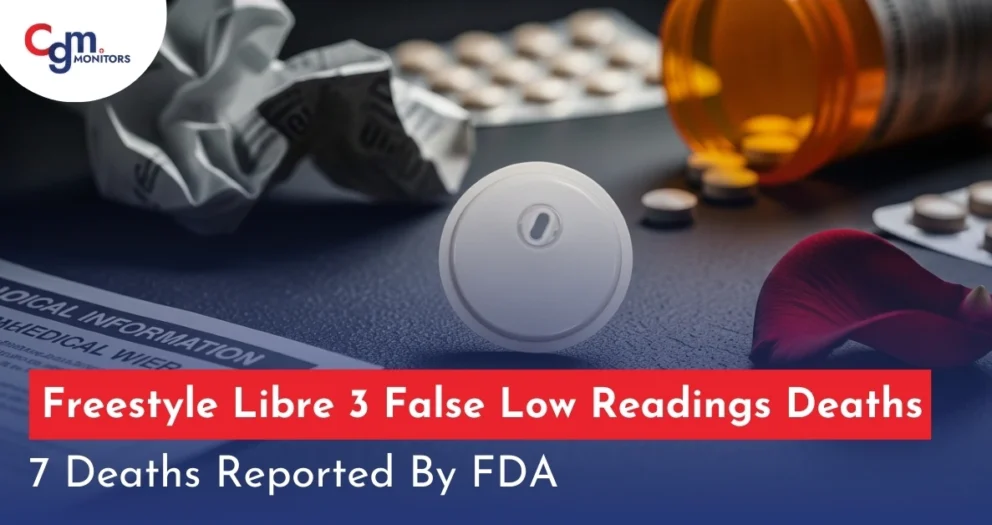Table of content
A1C test (glycated haemoglobin) tells you your blood glucose levels over the past 2-3 months. People with diabetes often ask, “How can I lower my A1C?” The answer to which is that diabetes management is a multi-dimensional game, mainly involving a balanced diet, regular exercise, and regular monitoring. Keeping A1C levels under control significantly reduces the risk of complications like cardiovascular disease, neuropathy, kidney issues, and retinopathy. The target for most adults with diabetes is to maintain an A1C level of 7% or lower.
What Is A1C?
A1C is a blood test that measures the percentage of haemoglobin in red blood cells that is coated with glucose. It reflects average blood glucose levels over the past 2–3 months and is an important indicator for diabetes management.
Note: HPLC with acetonitrile and buffers is the strongest and most trusted for diabetes A1C measurement, followed by immunoassay-based methods for convenience and speed.
Latest Treatments to Lower A1C
1. Stem Cell Therapy
Emerging research suggests stem cell therapy may have a positive impact on blood glucose control in some individuals. A study shared by PubMed has shown some positive results. Some individuals living with type 1 diabetes, who are also known as insulin dependent, as they cannot live without it, can become insulin independent with the help of Autologous nonmyeloablative HSCT (a cell therapy).
Although these therapies are still in clinical trial phases, they show potential for the future.
FDA Status: As of May 2025, the FDA has not approved autologous non-myeloablative HSCT for T1D. The only FDA-approved cellular therapy for T1D is donislecel (under the brand name Lantidra), and this one is for people with type 1 diabetes who experience hypoglycemic events (low sugar events).
2. FDA-Approved Medications
Several FDA-approved medications help control blood sugar levels and lower A1C:
- GLP-1 Receptor Agonists (e.g., liraglutide and semaglutide): These drugs enhance insulin secretion and help lower blood sugar levels.
- SGLT2 Inhibitors (e.g., empagliflozin): These medications help the kidneys remove excess glucose through urine.
- Oral GLP-1 Agonists (e.g., Rybelsus): A non-injectable option for blood sugar control.
Still pricking fingers to check blood glucose?
Check your eligibility for getting a finger-prick free CGM system today with CGM Monitors and receive yours at your door.
How to Lower A1C Naturally in 9 Ways
For those questioning ‘how to reduce A1C naturally?’, the following are some helpful tips to lower A1C:
1. Dietary Adjustments
When making an A1C diet plan, remember that while balance is the key, you need to restrict some carbohydrates and include protein, vitamins, and fiber-rich foods. Some low glycemic foods and the ones you need to avoid will be shown once you scroll a bit. Here, we wanted to add some consumables that may improve blood glucose control:
- Cinnamon: May lower A1C when incorporated into the diet.
- Apple Cider Vinegar (ACV): Some research has shown that daily consumption may help control blood glucose. Only 1 tbsp in one glass of water.
- Berberine: A plant alkaloid shown to lower A1C levels in people with type 2 diabetes.
2. Exercise
Regular exercise helps increase insulin sensitivity, which in turn improves blood sugar regulation. Aim to walk for at least 30 minutes every day for at least 5 days a week, or you may go cycling or swimming. Cycling and swimming are low-impact exercises that improve insulin sensitivity and aid in lowering A1C levels. Their joint-friendly nature makes them ideal for consistent diabetes management and better blood sugar control.
3. Sleep and Stress Management
Proper sleep and stress reduction are essential for optimal blood glucose control. Try getting a quality core sleep of 7–9 hours per night. Stress-reduction techniques like yoga, meditation, and mindfulness can also be beneficial for lowering blood sugar.
4. Add More Whole Grains to Your Meals
Unlike refined carbs, whole grains break down slowly and cause a more gradual rise in blood sugar. Options like brown rice, oats, quinoa, barley, and whole-wheat bread are excellent choices. Their fiber content also keeps you full longer, which helps with weight control and overall blood sugar balance. Replacing white rice or white bread with whole-grain alternatives is a simple swap that can make a big difference.
5. Enjoy the Benefits of Avocados
Avocados aren’t just trendy—they’re also powerful for blood sugar management. Rich in heart-healthy monounsaturated fats and fiber, they help slow digestion and reduce sugar spikes after meals. Adding half an avocado to your breakfast, blending it into a smoothie, or topping a salad with slices can be a delicious way to support lower A1C.
6. Focus on a Balanced Diet
A balanced plate is key to keeping glucose in check. Aim for:
- Lean proteins like chicken, fish, eggs, and beans.
- Non-starchy vegetables such as broccoli, spinach, peppers, and zucchini.
- Healthy fats from nuts, seeds, and olive oil.
- Limited processed foods and sugary treats.
Planning your meals with the right mix of nutrients helps prevent big spikes and dips in blood sugar, which in turn supports healthier A1C levels.
7. Cut Back on Refined Carbs
Carbohydrates have the most direct impact on blood sugar. Reducing refined carbs such as white bread, pasta, pastries, and soda can quickly improve blood glucose control. Instead, choose complex carbs like sweet potatoes, lentils, beans, or whole grains that digest more slowly and provide lasting energy. Even small changes—like swapping white pasta for whole wheat—add up over time.
8. Combine Natural Methods with Medication When Needed
For some people, diet and lifestyle alone may not be enough to lower A1C. If your doctor has prescribed medication, it’s important to continue taking it as directed. The best approach is often a combination of both: medication for stability and natural strategies for long-term improvement. Never stop or change your medication without consulting your healthcare provider.
9. Try Apple Cider Vinegar in Moderation
Apple cider vinegar (ACV) has gained attention for its ability to improve insulin sensitivity and reduce after-meal blood sugar spikes. A common approach is mixing 1–2 tablespoons in water before meals. While ACV can be a useful add-on, it should not be overused or taken on an empty stomach, as it may cause stomach irritation. Always use it as a complement—not a replacement—for other treatments.
Monitoring and Testing
Effective diabetes management requires regular glucose monitoring as well:
- Self-Monitoring of Blood Glucose (SMBG): Check blood glucose levels as recommended by your healthcare provider.
- A1C Testing: It is recommended to have your A1C tested at least twice a year if your diabetes is well-controlled, but more frequent tests may be needed if treatment changes occur.
- Continuous Glucose Monitoring (CGM): Devices like the Freestyle Libre 2 Plus can provide real-time glucose readings, blood glucose patterns, high or low sugar alerts, and can even be integrated with automatic insulin delivery (AID) systems.
Comprehensive Lifestyle Recommendations
Here is a table summarizing important lifestyle and medical recommendations for lowering A1C levels:
Aspect |
Recommendation |
| Diet – Foods to Eat | While whole grains may also be consumed in a restricted quantity. The best foods for diabetes control include but are not limited to lean proteins, non-starchy vegetables, legumes, nuts, seeds, and high-fiber foods. |
| Diet – Foods to Avoid | Processed foods, sugary snacks, refined grains, sugary drinks, high-fat foods, and trans fats. |
| Ideal Sleep Cycle | 7-9 hours of sleep per night. |
| Ideal Sleep Time | Go to bed by 10 p.m. and wake up by 6 a.m. (or adjust your schedule to ensure adequate sleep). |
| Ideal Workouts | Aim for 30 minutes of moderate exercise daily (e.g., brisk walking, cycling, swimming) for at least 5 days a week. And include muscle-strengthening exercises such as weight training at least twice a week. |
| Exercise Repetitions | Aim for at least 30 minutes of exercise per day, five days a week, to meet the 150-minute weekly target. Include 2-3 sets of 8-12 repetitions for strength training. |
| Self-Monitoring Frequency | Monitor blood glucose levels as advised by your healthcare provider, typically 1-4 times per day based on your treatment plan. |
| A1C Testing Frequency | Have A1C tested at least twice a year, or more frequently if there are changes in treatment or if blood sugar control is not optimal. |
| Continuous Glucose Monitoring | Use CGM system for real-time glucose tracking if recommended by your healthcare provider. |
| Stem Cell Therapy | Not FDA-approved yet, but under investigation in clinical trials. |
Conclusion
Carbs and A1C levels are closely connected; consuming more carbs will automatically lead to poor A1C levels. As far as ways to lower blood sugar levels are concerned, the notable ones include consuming a balanced diet (with fewer carbs), doing regular exercise, and monitoring your blood sugar levels regularly. Blood sugar monitoring is easy with the help of a CGM sensor, such as the Freestyle Libre 3 Sensor.
Disclaimer: This blog is for informational purposes only and does not substitute your healthcare specialist’s advice.







Write a comment
Your email address will not be published. All fields are required